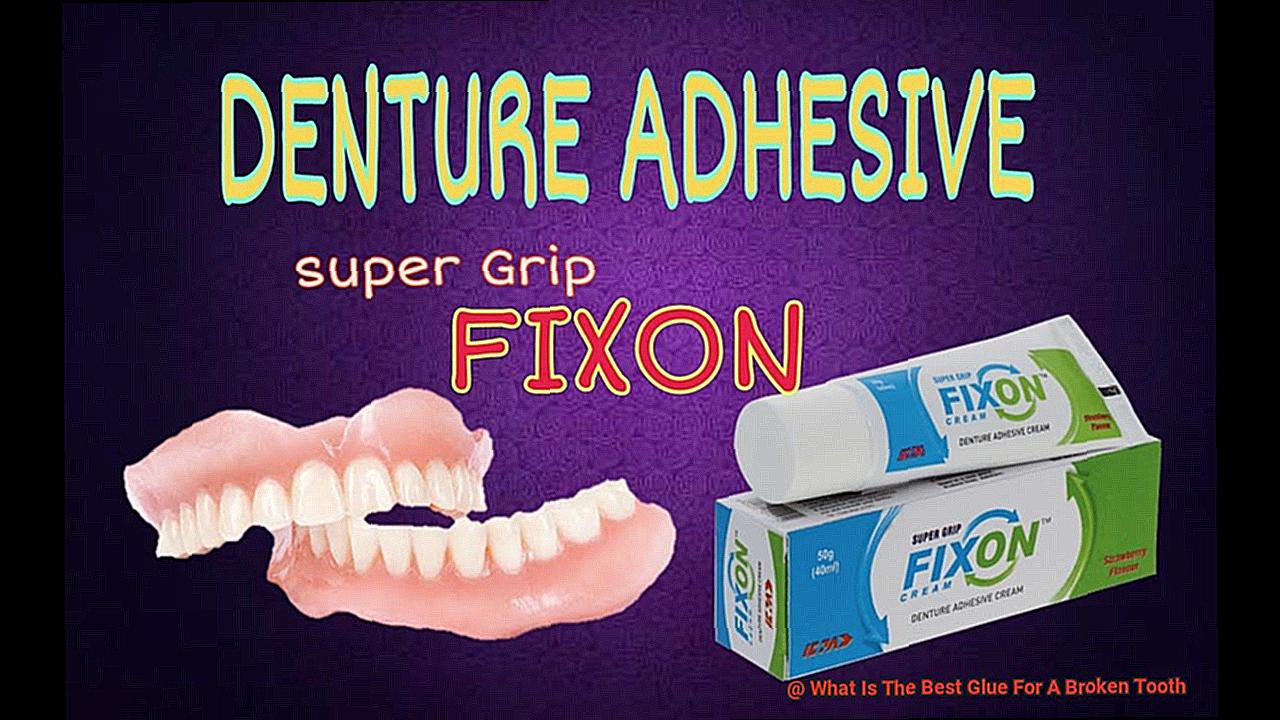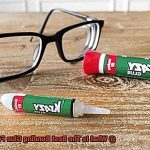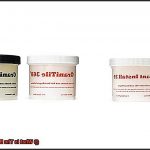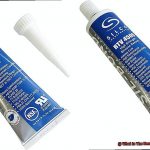Picture this: you’re munching away on a tasty treat when suddenly, disaster strikes. A piece of your tooth decides it’s had enough and breaks off.
There’s a solution that doesn’t involve panicking or hiding your smile. With the magic of modern dental technology, you can temporarily fix that broken tooth with the help of some trusty glue. In this article, we’ll take a deep dive into the world of tooth glues, exploring different types and giving you all the insider info on how to choose the best adhesive for your dental dilemma. So grab your magnifying glass and let’s unravel the mystery of repairing that chipped pearly white.
What is a Broken Tooth?
Contents
A broken tooth can be a painful and distressing experience. Whether it’s a minor chip or a severe fracture, understanding the causes, symptoms, and treatment options for broken teeth is essential for timely intervention and maintaining oral health.
In this article, we delve into the world of broken teeth, providing comprehensive information to help you navigate this dental issue effectively.
Causes of Broken Teeth:
- Trauma or accidents (falls, sports injuries): Sudden impact or force to the mouth can cause teeth to break or fracture.
- Biting down on hard objects (ice, pens, popcorn kernels): Using your teeth as tools or biting on hard substances can lead to tooth damage.
- Weakened teeth due to decay or untreated cavities: Tooth decay weakens the structure of the tooth, making it more susceptible to breaking.
- Bruxism (teeth grinding or clenching): Chronic grinding or clenching of the teeth can wear down enamel and lead to fractures.
- Poor dental hygiene: Neglecting proper oral care can result in tooth decay and weakened teeth.
- Aging teeth that have become brittle over time: As we age, our teeth can naturally become more brittle and prone to breakage.
Symptoms of Broken Teeth:
- Sharp pain when biting down or chewing: A broken tooth may cause sharp pain when pressure is applied during biting or chewing.
- Increased sensitivity to hot or cold temperatures: Exposed dentin from a broken tooth can make the tooth more sensitive to temperature extremes.
- Swelling and inflammation around the affected tooth: Inflammation and swelling may occur if the breakage has led to an infection or abscess.
- Visible chips or fractures in the tooth structure: You may notice visible cracks, chips, or missing pieces in your tooth.
- Rough edges on the broken tooth: Running your tongue along the tooth may reveal rough or jagged edges.
Treatment Options for Broken Teeth:
- Dental bonding or filling: For minor chips or fractures, a dentist can use composite resin material to restore the tooth’s shape and function.
- Dental crowns: If the damage is extensive, a dental crown may be necessary to cover and protect the broken tooth.
- Root canal therapy: If the fracture reaches the tooth’s nerve, root canal treatment may be required to remove infected tissue and restore the tooth’s health.
- Dental implants or bridges: In cases where the tooth cannot be salvaged, extraction followed by replacement with an implant or bridge may be recommended.
What is Dental Adhesive?
The answer lies in the magic of dental adhesive, also known as dental glue or dental cement. In this article, we will delve into the basics of dental adhesive, exploring its composition, types, and importance in maintaining your picture-perfect smile.
Composition:
Dental adhesive is a clever concoction of resin materials, such as acrylic or composite resin, mixed with fillers and initiators. This unique blend creates a strong and durable bond between your dental restorations and natural teeth or implants. Think of it as the superhero glue that ensures your smile remains intact.
Types:
Dental adhesives come in different varieties to suit various needs. Self-etching adhesives feature acidic monomers that simultaneously etch the tooth surface and prime it for bonding. Total-etch adhesives involve using phosphoric acid to etch the tooth surface before applying the adhesive. And then there are universal adhesives, which offer versatility by working with both self-etch and total-etch techniques. It’s like having a Swiss army knife for your dental bonding needs.
Importance of Bond Strength:
Imagine biting into your favorite crunchy snack only to have your dental restoration come loose. Yikes. Dental adhesive must possess adequate bond strength to securely hold the restoration in place under normal chewing forces. Factors such as adhesive type, tooth surface treatment, and tooth structure condition can influence this crucial aspect. A solid bond ensures long-term stability and durability of your dental work.
Desirable Characteristics:
Besides bond strength, dental adhesives may have other desirable qualities. Ease of use, good handling properties, low post-operative sensitivity, and resistance to moisture contamination are just some of the characteristics that contribute to the overall success of the adhesive and the restoration. These qualities make your dental experience more comfortable and worry-free.
Professional Use Only:
Before you go rummaging through your toolbox for dental adhesive, it’s essential to understand that it is strictly for professional use. Dentists and dental technicians undergo extensive training to handle and apply dental adhesive correctly. So, if you find yourself with a broken or damaged tooth, seek immediate professional dental care rather than attempting a DIY fix.
Types of Dental Adhesives
When it comes to broken teeth, finding the right dental adhesive is crucial for a temporary fix. Dental adhesives, also known as dental glue or dental cement, are specifically designed to bond dental restorations, such as crowns, bridges, and veneers, to the natural tooth structure. In this blog post, we will explore the different types of dental adhesives and their advantages and disadvantages to help you make an informed choice.
Resin-Based Adhesives: Strong and Aesthetic
Resin-based adhesives are the most commonly used dental adhesives due to their excellent bonding strength and durability. They consist of a bonding agent and a resin material that hardens when exposed to a curing light. Resin-based adhesives provide a strong and long-lasting bond between the tooth and the restoration. They can also be matched to the natural color of the teeth, making them highly esthetic. However, they require a special light source for curing and may not be suitable for all types of broken teeth.
Glass Ionomer Cement: Protects and Bonds
Glass ionomer cement (GIC) is another popular option for dental adhesives. It is made from a mixture of glass powder and an organic acid. GIC releases fluoride, which helps prevent tooth decay. It has good biocompatibility and can adhere well to both enamel and dentin. However, GIC may not have as strong of a bond as resin-based adhesives, making it more suitable for non-load-bearing restorations such as small fillings or temporary crowns.
Zinc Phosphate Cement: Time-Tested Strength
Zinc phosphate cement is one of the oldest types of dental adhesives still in use today. It consists of a powdered form of zinc oxide and a liquid phosphoric acid solution. When mixed, they form a hard crystalline structure that bonds well to tooth structure and metal restorations. Zinc phosphate cement provides time-tested strength and durability. However, it has a high acidity level that can cause sensitivity and is typically used for permanent cementation.
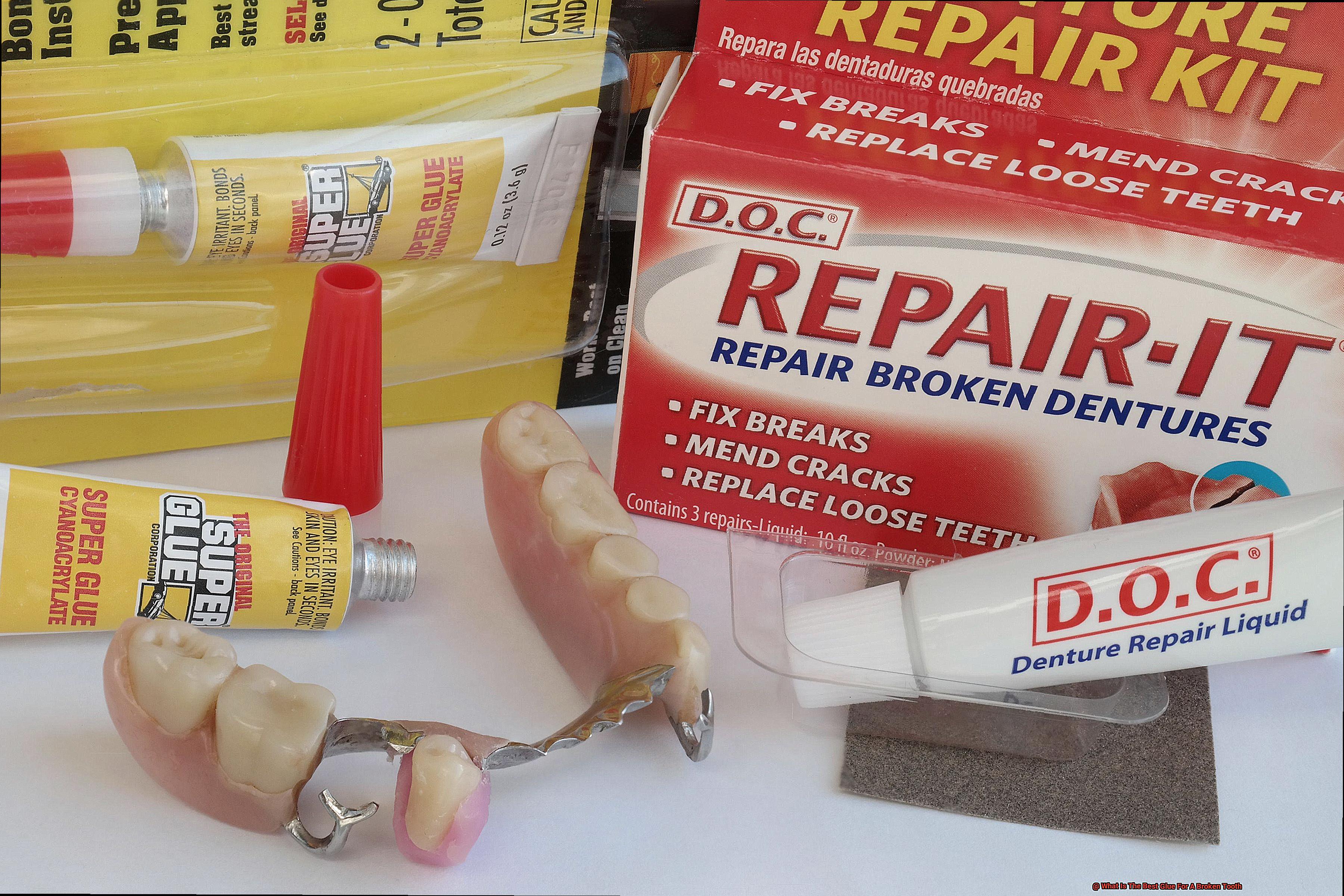
Polycarboxylate Cement: Gentle and Biocompatible
Polycarboxylate cement is a gentle alternative with low acidity. It contains a polyacrylic acid liquid and a zinc oxide powder. When mixed, these components form a cement that bonds chemically to both the tooth structure and the restoration. Polycarboxylate cement has good biocompatibility and is suitable for patients with sensitive teeth or pulp conditions. However, it may not provide as strong of a bond as resin-based adhesives.
Benefits of Using Dental Adhesive
Step into the captivating world of dentistry and let us uncover the extraordinary benefits of dental adhesive. Have you ever marveled at how dentists ensure the firmness of your dental restorations? Look no further than dental adhesive, also known as dental glue. In this article, we will unveil the remarkable advantages of using dental adhesive, a truly indispensable tool in modern dentistry.
Enhanced Stability and Retention:
Experience the freedom to eat, speak, and smile confidently with dental adhesive’s unrivaled ability to firmly secure dental restorations in place. Whether it’s a crown, bridge, or denture, dental adhesive provides unparalleled stability and retention.
Prevents Dental Issues:
Dental adhesive acts as a formidable barrier between the restoration and natural tooth structure, shielding against harmful bacteria and food particles. By creating a seal, it dramatically reduces the risk of tooth decay and gum disease, safeguarding your oral health.
Minimizes Sensitivity:
Bid farewell to the discomfort caused by sensitivity to hot or cold temperatures. Dental adhesive acts as a protective shield, alleviating sensitivity in broken or damaged teeth. Say goodbye to those sudden jolts of pain that disrupt your daily life.
Provides Additional Support for Insufficient Tooth Structure:
In cases where there is insufficient natural tooth structure to support a restoration, dental adhesive becomes the ultimate savior. It skillfully bonds the restoration to neighboring teeth or dental implants, offering crucial additional support and stability.
Easy Application and Versatility:
Embrace the user-friendly nature of dental adhesive, available in various forms such as paste or strips. Its versatility empowers individuals to choose the option that best suits their unique needs. Moreover, it can be effortlessly applied by patients at home, adding an extra layer of convenience.
Prolongs the Lifespan of Restorations:
With dental adhesive ensuring the firm placement of restorations, you can bid farewell to worries about loose or dislodged dental work. It works tirelessly to extend the lifespan of your restorations, providing peace of mind and long-lasting dental solutions.
How to Use Dental Adhesive
Dental adhesive, also known as dental glue or tooth glue, is a special type of adhesive designed specifically for use in dentistry. It can help temporarily repair broken or chipped teeth until you can visit a dentist for a more permanent solution. In this article, we’ll guide you through the proper steps to use dental adhesive effectively and ensure a strong and secure bond.
Clean and Prepare the Tooth:
Before applying dental adhesive, it’s essential to clean the broken tooth thoroughly. Gently brush your teeth with a soft-bristled toothbrush and rinse with water to remove any debris or food particles. Make sure the tooth surface is smooth and free from plaque or old adhesive. This will ensure optimal bonding between the adhesive and the tooth.
Dry the Tooth:
Moisture can affect the bonding process, so make sure the tooth is completely dry before applying the adhesive. Use a clean piece of gauze or tissue to gently blot the tooth dry. This will create a clean and dry surface for the adhesive to adhere to.
Apply a Small Amount of Adhesive:
Dental adhesive comes in different forms, such as paste, powder, or liquid. Follow the instructions provided by the manufacturer to apply the specific type of adhesive you have. Generally, apply a small amount onto the surface of the tooth or restoration. Avoid applying too much adhesive, as it can lead to excess oozing and discomfort.
Spread the Adhesive Evenly:
Use a clean applicator, like a cotton swab or disposable brush, to spread the adhesive evenly over the area where it will be bonded. Be gentle and careful not to apply too much pressure or disturb the position of the restoration. Ensure that all surfaces that will come into contact with the adhesive are coated evenly.
Press the Restoration into Place:
Once the adhesive is applied, gently press the dental restoration onto the prepared tooth surface. Make sure it fits securely and aligns properly with adjacent teeth. Apply gentle pressure to ensure a strong bond between the restoration and the tooth.
Remove Excess Adhesive:
Check for any excess adhesive that may have oozed out around the edges of the restoration. Use dental floss or an interdental brush to remove it. Removing excess adhesive is essential to prevent irritation or discomfort and to ensure a proper fit and bite.
Allow the Adhesive to Set:
Dental adhesive needs time to set and bond properly. Follow the manufacturer’s instructions regarding the setting time. Avoid eating or drinking during this period to allow the adhesive to fully bond. Give it enough time to ensure a strong and secure bond between the restoration and the tooth.
Precautions When Using Dental Adhesive
Using dental adhesive requires taking certain precautions to ensure its safe and effective use. Proper storage, application techniques, and safety measures should be followed to avoid any complications or damage. Here are some important precautions to keep in mind when using dental adhesive:
- Cleanliness is key: Before applying dental adhesive, thoroughly clean the area where it will be applied. Brush your teeth and gums and rinse your mouth with water to remove any debris or food particles that could interfere with the bonding process.
- Dry the area completely: Moisture can affect the bonding process, so make sure to dry the area thoroughly before applying dental adhesive. Use a clean, dry cloth or tissue to pat the area dry like a pro.
- Portion control: Less is more when it comes to dental adhesive. Applying too much adhesive can cause it to seep out from under the restoration or put too much pressure on the tooth, leading to discomfort or damage. Follow the manufacturer’s instructions and use only a small amount of adhesive. Trust me, a little goes a long way.
- Temporary fix, not a long-term solution: Dental adhesive is meant to be a temporary solution until professional dental treatment can be obtained. Using it for an extended period of time can lead to further complications or damage. Think of it as your trusty sidekick until you can swoop in for professional care.
- Watch what you eat: Avoid hard or sticky foods that can put excessive pressure on your restoration or dislodge it altogether. Opt for softer foods and cut them into smaller pieces if needed. Your restored tooth will thank you.
- Maintain your oral hygiene routine: Don’t neglect regular brushing and flossing just because you’re using dental adhesive. Continue your oral hygiene practices, being careful and gentle around the restoration site to maintain overall oral health and prevent bacterial buildup.
- Discontinue if discomfort occurs: If you experience any discomfort, pain, or irritation while using dental adhesive, discontinue its use and seek advice from your dentist. These symptoms could indicate an underlying issue that needs to be addressed by a dental expert.
- Follow instructions: Always follow the instructions provided by your dentist or dental professional. They know your unique situation and will provide specific guidance tailored to your needs.
Professional Treatment for a Broken Tooth
Today, we embark on a mission to uncover the importance of seeking professional treatment for a broken tooth. Picture this: you’re the superhero of your own dental world, and it’s time to save the day for your pearly whites.
Types of Treatments Available:
When it comes to fixing a broken tooth, there’s a whole arsenal of professional treatments at your disposal. But hold on tight, as we explore the top contenders:
- Dental Bonding: For minor breaks, dental bonding comes to the rescue. It involves applying a tooth-colored resin, like a fresh new costume, to restore both the appearance and functionality of your damaged tooth.
- Dental Crowns: When the break is more severe, dental crowns swoop in as the ultimate protectors. These custom-made caps fit snugly over your damaged tooth, shielding it from further harm while restoring its strength and shape.
- Root Canal Therapy: If the break extends into the root or nerve of your tooth, fear not. A root canal procedure can save the day. By removing damaged tissue and sealing it off, this treatment ensures that your tooth stays in tip-top shape.
Potential Risks of Not Seeking Treatment:
Now, let’s shine a spotlight on the dangers lurking in the shadows when you neglect professional treatment for a broken tooth:
- Increased Vulnerability: An untreated broken tooth becomes a haven for decay and infections. It’s like leaving your fortress unguarded, inviting oral health villains to wreak havoc on your smile.
- Painful Consequences: Ignoring treatment can lead to excruciating pain, as damaged nerves and tissues cry out for help. Let’s prevent this superhero-sized headache.
Benefits of Seeing a Dental Professional:
As superheroes of self-care, seeking professional dental treatment offers numerous benefits:
- Long-Term Oral Health: Professional treatment not only repairs the immediate damage but also prevents future complications. It’s like fortifying your defenses against future dental battles.
- Expert Guidance: Dentists have the knowledge and experience to assess the extent of the damage accurately. With their guidance, you can make informed decisions about the best course of action.
FuTN1ZUdXtw” >
Also Read: What glue can I use to reattach a crown?
Conclusion
When it comes to fixing a broken tooth, finding the best glue is crucial. But with so many options available, how do you know which one to choose? Well, fear not. I’m here to guide you through this dental dilemma.
First and foremost, it’s important to understand that gluing a broken tooth is not a permanent solution. It should only be done as a temporary fix until you can see a dentist. That being said, there are certain qualities you should look for in a dental adhesive.
One of the most important factors is strength. You want a glue that can withstand the pressures of chewing and biting without breaking down. Look for adhesives specifically designed for dental use, as they tend to have stronger bonding capabilities.
Another crucial aspect is safety. You don’t want to use any glue that contains harmful chemicals or toxins that could further damage your tooth or cause irritation in your mouth. Opt for adhesives that are non-toxic and approved by dental professionals.
Ease of use is also something to consider. Applying glue to a broken tooth can be tricky, especially if it’s in an awkward position. Look for adhesives that come with applicators or syringes for precise and easy application.
Lastly, durability plays a significant role. The best glue for a broken tooth should provide long-lasting results until you can get proper dental treatment. Avoid glues that easily dissolve or wear off after just a few hours.
In conclusion, when it comes to choosing the best glue for a broken tooth, prioritize strength, safety, ease of use, and durability. Remember, this should only serve as a temporary fix until you can visit your dentist for proper treatment.

